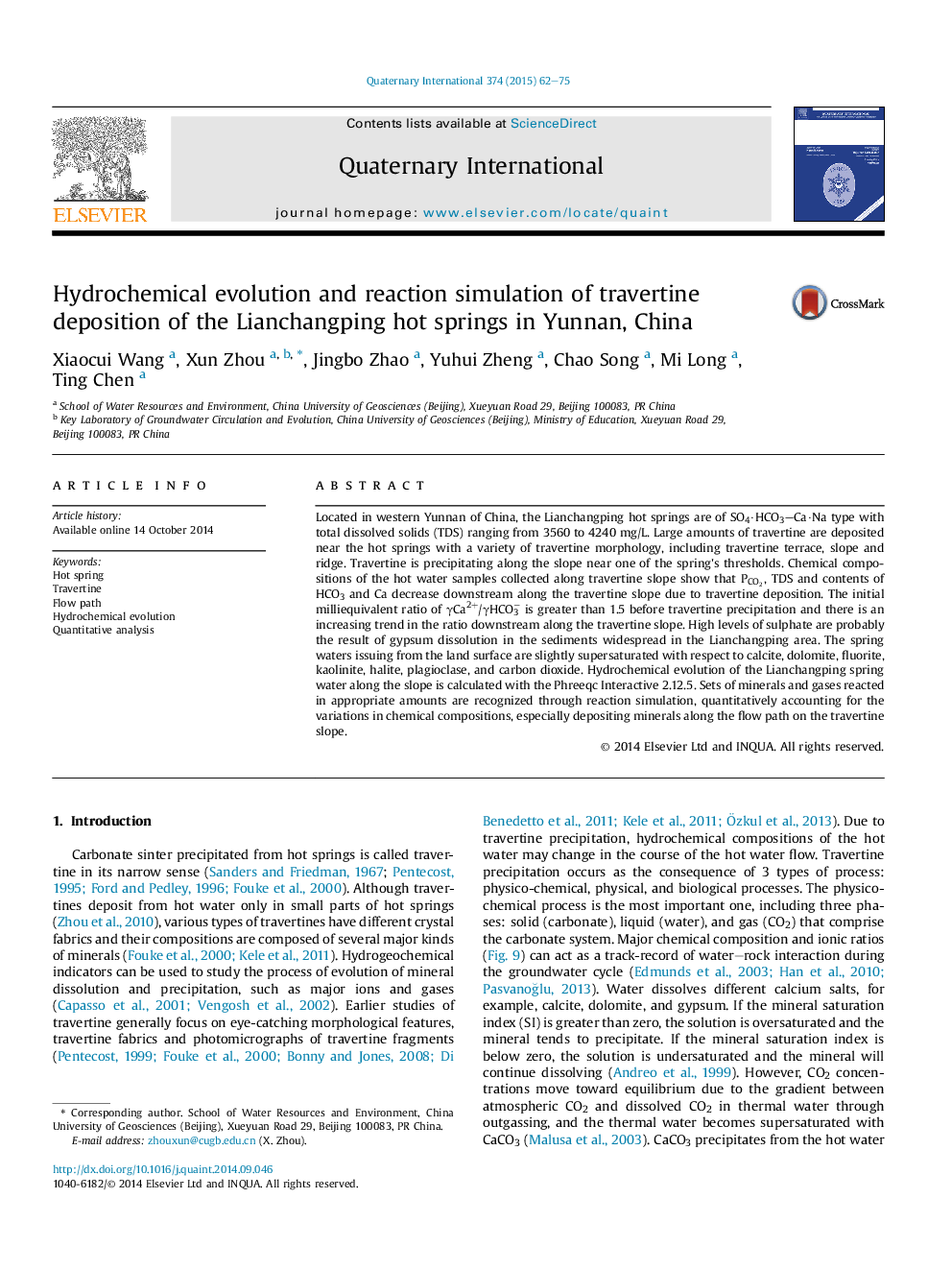| Article ID | Journal | Published Year | Pages | File Type |
|---|---|---|---|---|
| 1040701 | Quaternary International | 2015 | 14 Pages |
Located in western Yunnan of China, the Lianchangping hot springs are of SO4·HCO3–Ca·Na type with total dissolved solids (TDS) ranging from 3560 to 4240 mg/L. Large amounts of travertine are deposited near the hot springs with a variety of travertine morphology, including travertine terrace, slope and ridge. Travertine is precipitating along the slope near one of the spring's thresholds. Chemical compositions of the hot water samples collected along travertine slope show that PCO2PCO2, TDS and contents of HCO3 and Ca decrease downstream along the travertine slope due to travertine deposition. The initial milliequivalent ratio of γCa2+/γHCO3− is greater than 1.5 before travertine precipitation and there is an increasing trend in the ratio downstream along the travertine slope. High levels of sulphate are probably the result of gypsum dissolution in the sediments widespread in the Lianchangping area. The spring waters issuing from the land surface are slightly supersaturated with respect to calcite, dolomite, fluorite, kaolinite, halite, plagioclase, and carbon dioxide. Hydrochemical evolution of the Lianchangping spring water along the slope is calculated with the Phreeqc Interactive 2.12.5. Sets of minerals and gases reacted in appropriate amounts are recognized through reaction simulation, quantitatively accounting for the variations in chemical compositions, especially depositing minerals along the flow path on the travertine slope.
